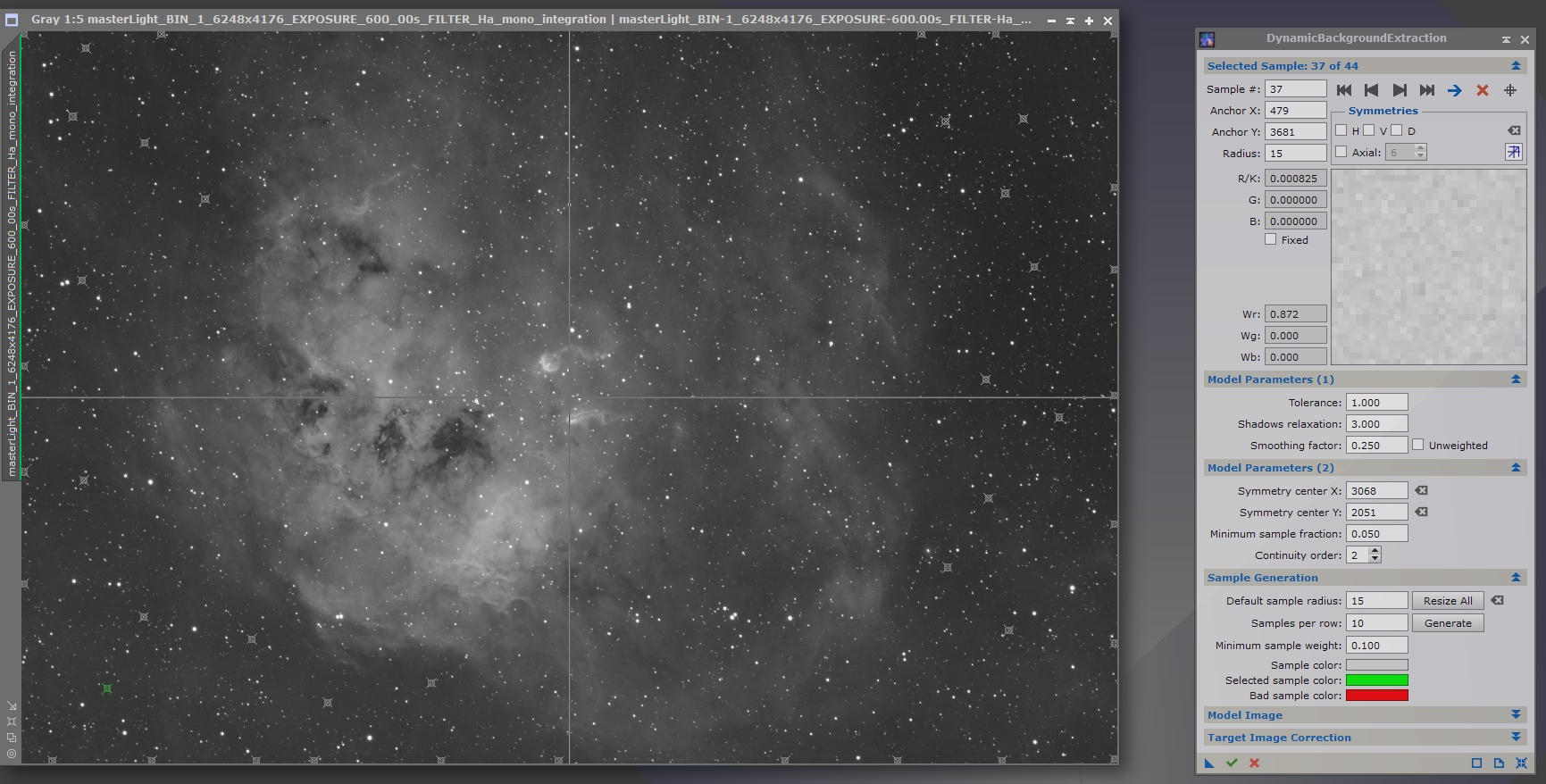Riccardo Civati:
Hi David
thanks for the comprehensive answer.
I always and only use DBE because I believe that using it well provides excellent results.
In the end, i positioned the DBE models more or less as you see in the photo at the beginning of the topic and I used a tolerance of 1. As you can see, this leads to a loss of signal in the very weak areas on the left, but increases the contrast between the sky background and the medium signal and makes the whole image homogeneous.
for the other channels (SII, OIII) I used 2 different models.
today I try to do what you suggest (dbe with only 2 points on the left side). alternatively I can also avoid running DBE on SHO
what do you think about avoiding DBE?
Riccardo
Hi Riccardo, I would love to see the result and hear what you think.
The issue is, if you put the DBE point on non-zero subject matter signal, it will erase the subject matter signal because you just told it that the signal is background gradient.
Some gradients might exist in the field of view of the subject matter (ie. good stuff). The gradient is real subject matter and you may want it to remain if the image is to be more "honest" and display all that you really captured.
It might not win any photographic awards, because it violates what we percieve to be balanced images. You might reconsider the re-framing, or changing the FOV. In your example, if you had places the centre/star cluster in the middle of the image, rather than the tadpoles, you would likely have balanced brightness better over the whole frame. Alternatively you might consider embracing the fact your subject matter has a gradient anyways - sometimes its a good thing to break one or two (but not too many) conventional rules. Or you might decide to hide that part of the subject matter to achieve a more conventionally pleasing image. Whatever floats your boat.
If you avoid DBE completely, you will likely still have to do a colour balance somehow - which is basically a DBE with no spacial gradients (ie a flat plane). If you can't spot any gradient in the image, this might work just fine. If you can see a background gradient, it will remain, however. Note that I am distinguishing a gradient in the nebulosity/subject matter from a sky gradient caused my the moon, lights, cloud reflections.
For narrowband, I generally use an extracted Lum - double stretched to pick my points near minimums in brightness (ultimately parts I want to appear black). I then iconify DBE, cancel the interactive model, then pull up the images and perform DBE using the same points on all frames. I just think this saves time over selecting lots of points on multiple images.
Finally, I have to admit that I shoot in fairly dark skies and my gradients are never very complicated - I feel your example image doesn't have a complicated gradient either. I am certainly not an expert in Graxpert, but it is likely much more useful in situations where the gradient is a bigger concern.
Cheers,
Dave



